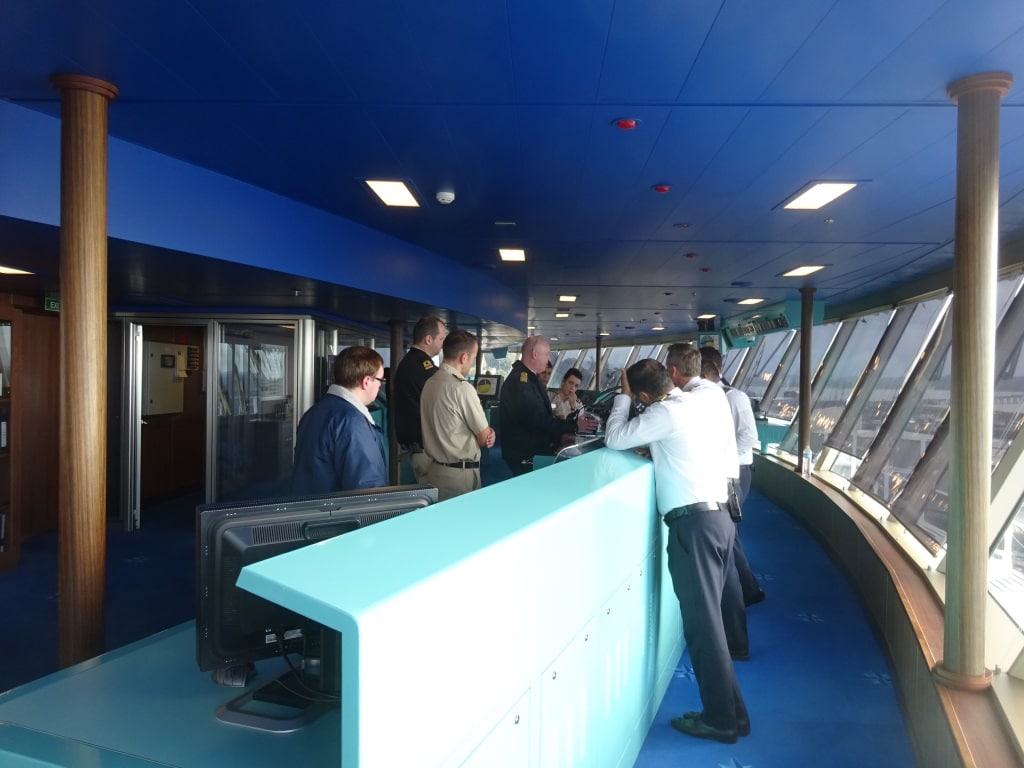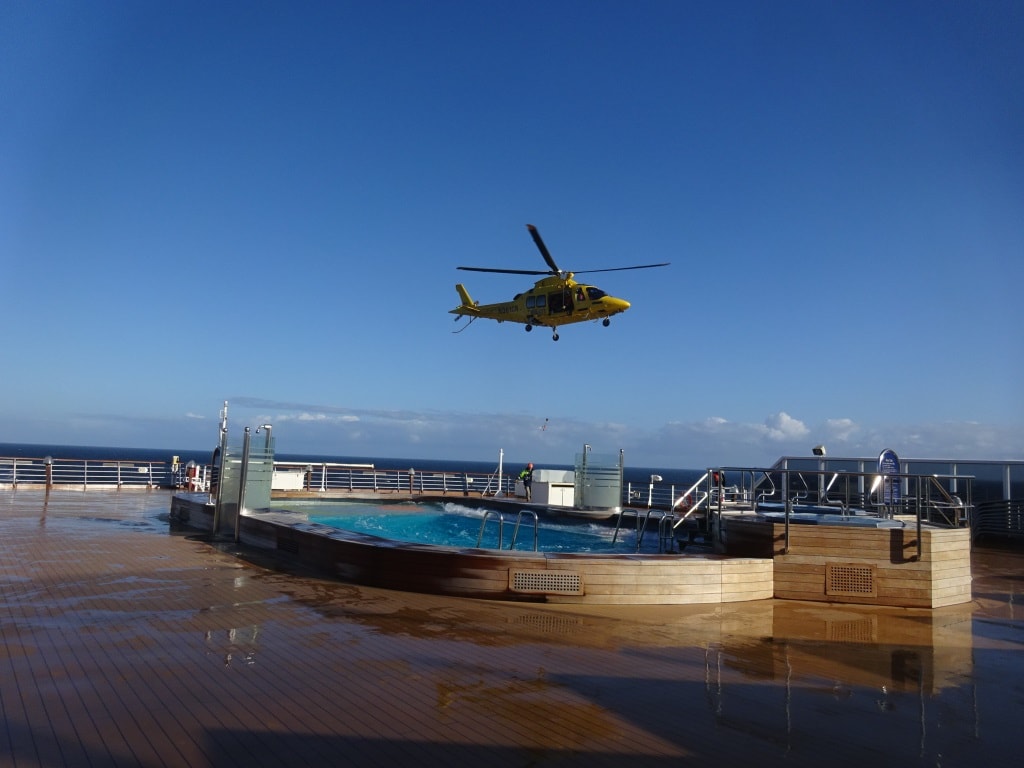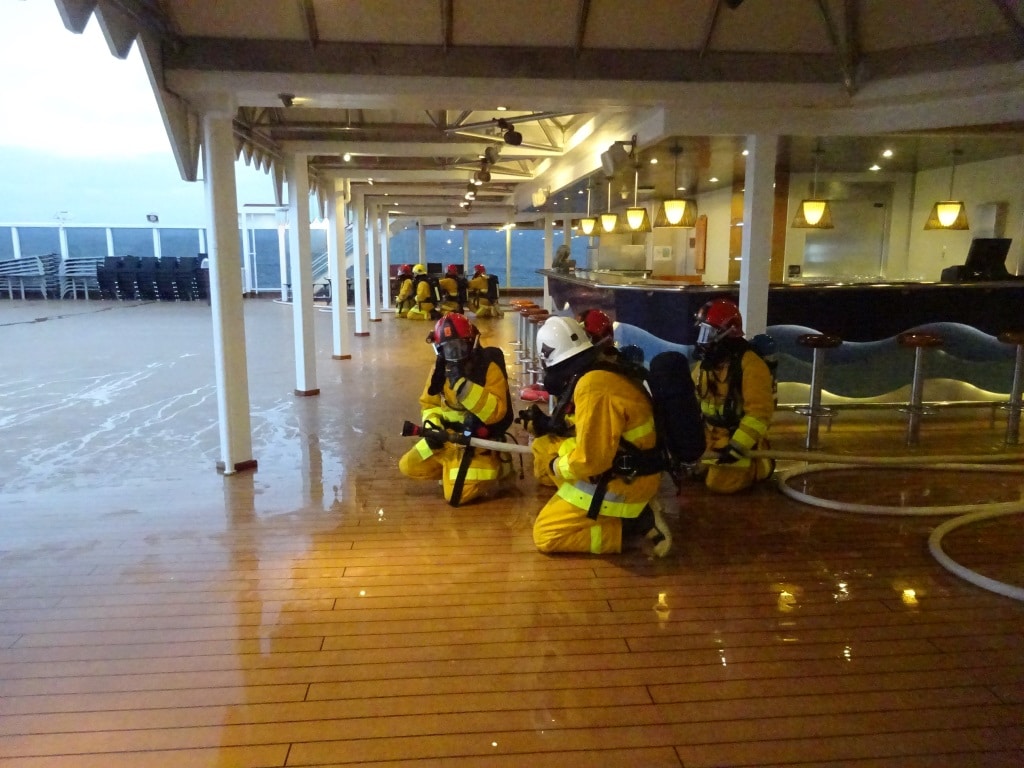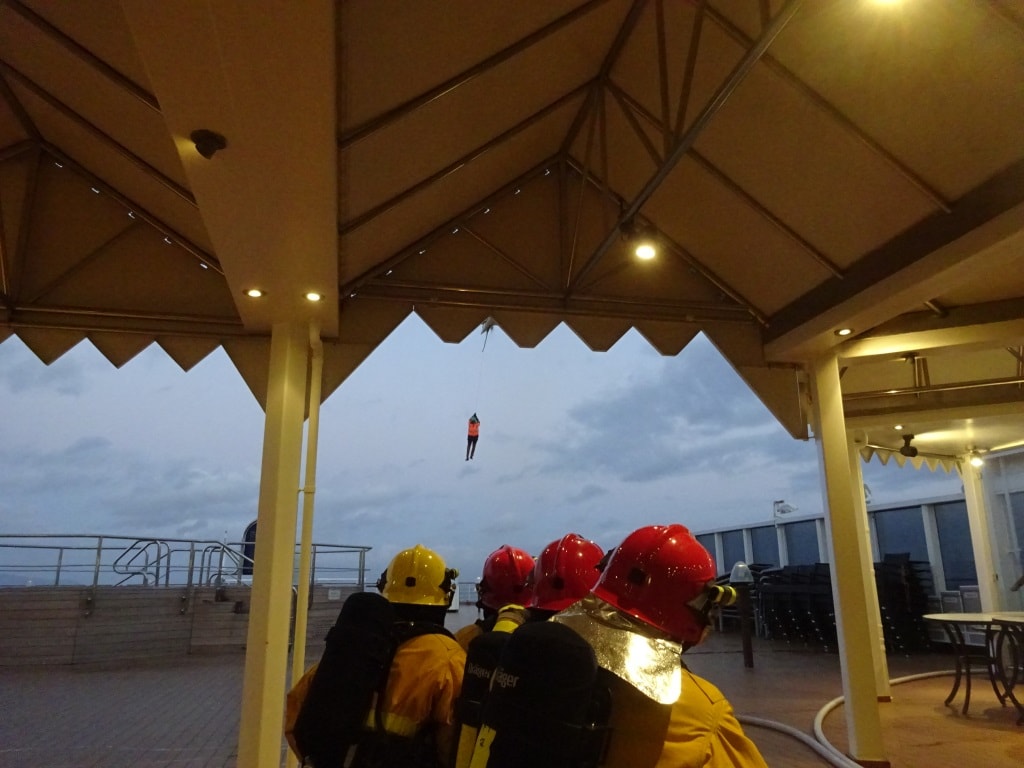We had the wind in our back, gale force winds, and with that extra push, made good time to the Columbia Bar pilot station. From there it is about 2 hrs. until being docked. The river itself is really a Canadian river as its source water comes from the Rocky Mountains in Canada. And thus a sort of export of potable water in bulk instead of by bottle across the border. And it is a lot of water that makes its way of 1234 miles down to the open sea. As a result the estuary is nice and wide and the approach channel has ample space for ships to pass each other. It is just the swell that rolls over the Bar (the sandy bank where the river deposits all its debris) that can made it quite dangerous as the ships can violently roll here. But by charging full speed up the river and keeping the stabilizers out we did not have any problems today.
The Gale force winds had one complication and that was that the pilot arrived by helicopter instead of by pilot boat. The water was simply too choppy to make a good lee and it is also better for the ship itself to continue on the planned track than having to slow down and turn into the wind, or away from the wind and getting one side of the ship out of the swell.
For pilots that are coming by helicopter it is always amazing to see what an organization it takes on a cruise ship to get him or her on board. On a cargo ship one crew member might show up, with an extinguisher, if he really feels in a safety mood. On a cruise ship there are between 30 and 80 crew involved to do it the proper way and the safe way. There has never been an accident with a pilot transfer on any ship but they say that Murphy also has a pilot’s license, so we had be better be safe than sorry.

Captain Jeroen van Donselaar is conducting the briefing for the Navigators about how it is all going to take place. I was on the aft deck supporting the Safety Officer who was in charge of the transfer operation.
Our main concern is for the safety of the ship, read the guests. In situations like this the guests are the biggest danger to themselves. They have no idea what is exactly going on and they all want to stand there and take photos. Flashlight photos are dangerous for the pilot, and our equipment on deck and firefighting plans can be dangerous for the guests if they would be milling around. And our guests are extremely good in milling around. Arrival on board and departure by the pilot today was in daylight and that alleviated the problem of flashing lights but the rest of the dangers remained. So we enacted our trained battle plan. On the Signature Class (Eurodam and Nieuw Amsterdam) the outside aft pool deck (Seaview Deck) is the best place to conduct a transfer as it has the least obstructions. On other ships it is the bow but these Signature ships have “the bubble” there, the raised deck number 5 with railings which stick out and can get somebody entangled.
Security blocked off all the aft decks from funnel down to pool deck and posted sentries at all the doors. The starboard aft deck is also the smoking corner and security was quite busy keeping the smokers out as the craving to be in the vicinity of an ashtray seems to make people quite impatient. The deck stewards cleared away all the chairs and tables and lashed them to the railings as a helicopter which comes very low can create an under draft of up to 60 knots of wind pressure. The Bo ‘sun took away the dressing lights and the halyards so the aft deck was completely clear of any obstructions. The fire support troops then rolled out the hoses, tested and charged them up and rigged up foam. Foam comes in drums and is mixed through the water hose to create a protective layer on deck in case there are any fuel leaks from a crashed helicopter. Foam will seal off the fuel and without oxygen it cannot burn. The chance that a helicopter crashes is remote and if it would happen then a pilot would always try to ditch the helicopter in the sea and not on top of a ship.
Once the helicopter was within 5 minutes of the ship, the fire teams went on air, switching on the SCUBA and then took position. If something goes wrong, then they can be in 10 seconds near the helicopter and provide a protective screen of water and foam between the helicopter and the ship. And hopefully also save the sea pilot and the helicopter crew. Of course nothing happened and everything went as it should go. The whole evolution for landing or taking off of a sea pilot takes less than 2 minutes and goes in a way much faster than transfer by boat.
We stayed in Astoria from noon to 1800 hrs. just enough time to explore the nice city. Then it was back down river and to open sea where we sail all day along the coast of California until we reach San Francisco. On departure the wind started to die down and that will help a lot with the movement of the ship if it does not pick up again. We are now in October and that is the time for the autumn storms along the coast and some haziness at times as well.




October 2, 2017 at 9:20 pm
Very interesting description of all the workings of the helicopter transfer. Everyone’s efforts for safety are really appreciated!
October 3, 2017 at 9:03 pm
Again, Captain. I don’t remember you ever blogging about an actual helicopter delivery of a Pilot. I certainly appreciate all the photos you made and of the hanging arrival, some sort of a modern Tarzan coming on board.
I also know the aft pool deck quite well from the lunches I had as a reward for some work I had done with my two friends in the Crew Mess Room. It sure is stripped of all the furniture strapped to the railings!
So we have also dressing lights besides dress flags? Ah, a little something I learned from the late Captain
Russell-Dunford 🙁